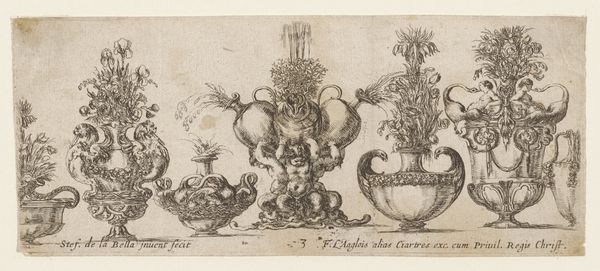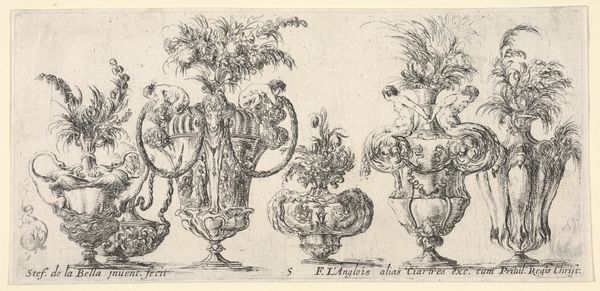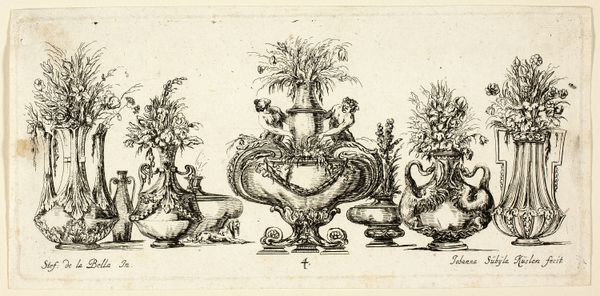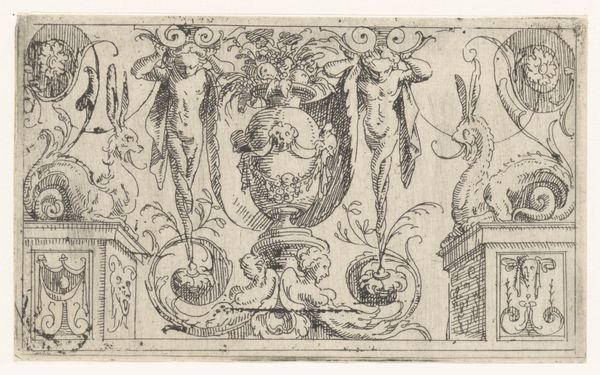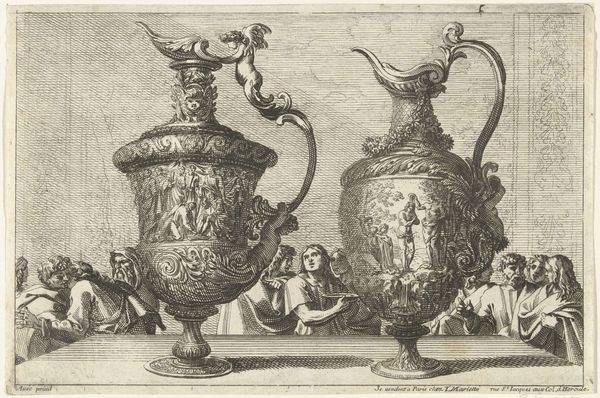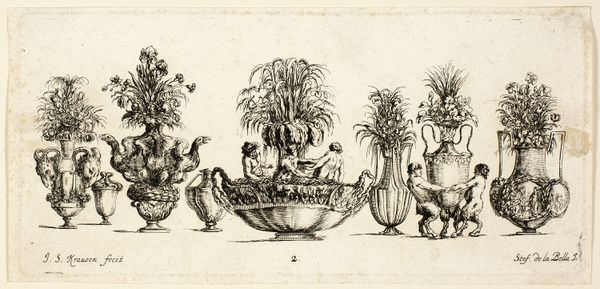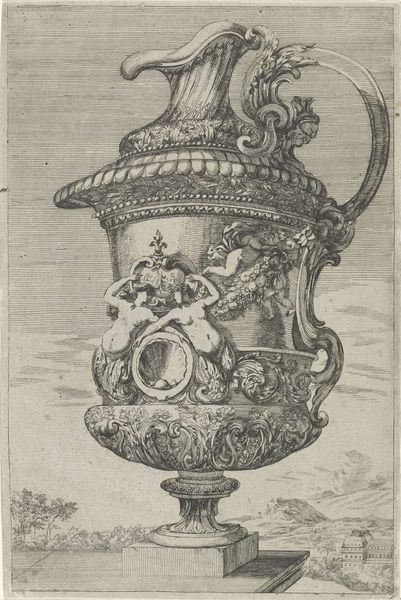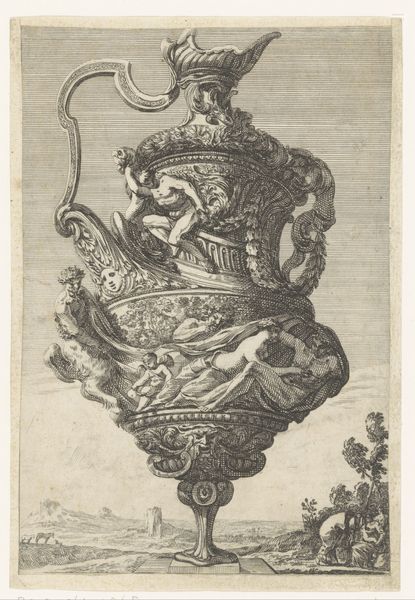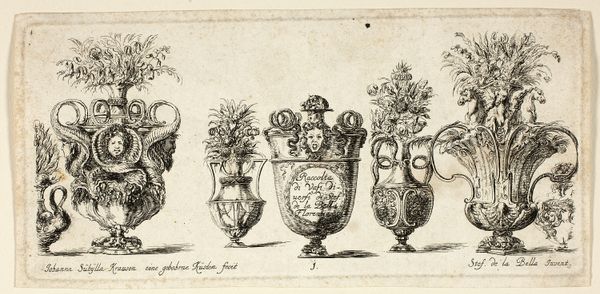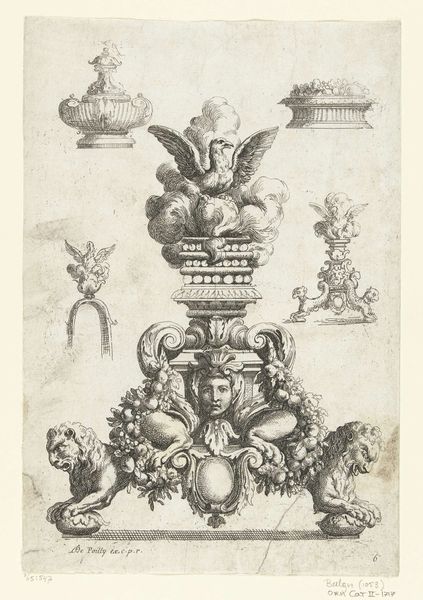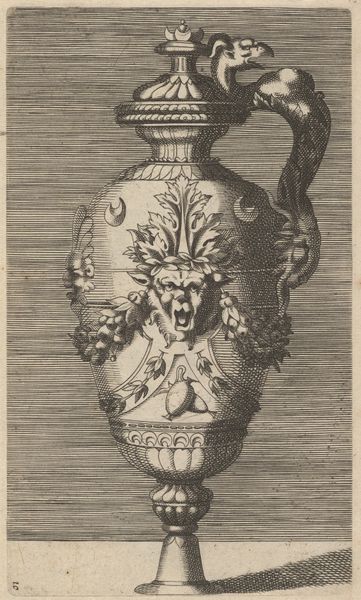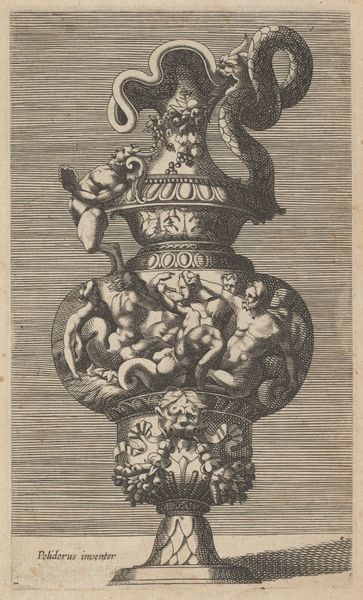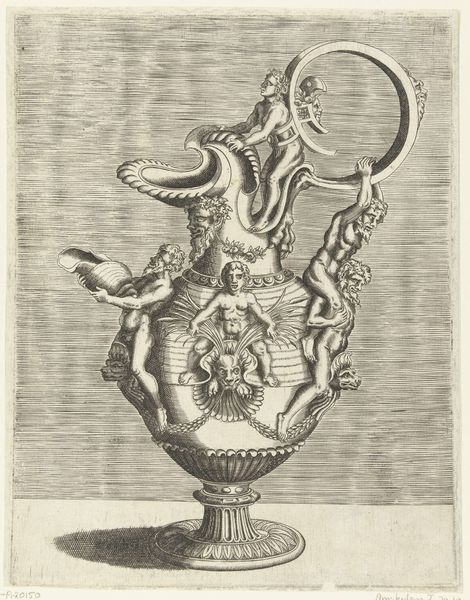
Seven vases, the vase in the middle formed by three infants, each holding an ewer, Plate 3 from: 'Collection of Various Vases' (Raccolta di Vasi Diversi) 1650 - 1656
0:00
0:00
drawing, print, etching, ink, engraving
#
drawing
#
baroque
#
pen drawing
# print
#
etching
#
vase
#
ink line art
#
ink
#
engraving
Dimensions: Sheet: 3 7/16 × 8 1/8 in. (8.8 × 20.7 cm)
Copyright: Public Domain
Stefano della Bella crafted this etching, "Seven Vases," where classical forms intertwine with whimsical invention. Note the central vase: three infants support ewers, their forms merging into a functional, decorative object. The motif of children as structural elements echoes ancient caryatids, figures used as pillars in classical architecture. But here, the gravity of architecture transforms into the lightness of play. This motif reappears across art history, from Renaissance fountains to Baroque garden sculptures, each time imbued with new cultural meanings. Consider, for instance, how putti, or cherubic figures, symbolize innocence, divine love, and the cycle of life. Their presence touches deep, subconscious chords, reminding us of primal connections, of familial bonds, and the ever-flowing passage of time. In the context of the 17th century, such imagery also reflects a fascination with metamorphosis and the blurring of natural and artificial forms. This vase becomes more than a container; it transforms into a symbol of continuity, an emblem of life's delicate balance.
Comments
No comments
Be the first to comment and join the conversation on the ultimate creative platform.
